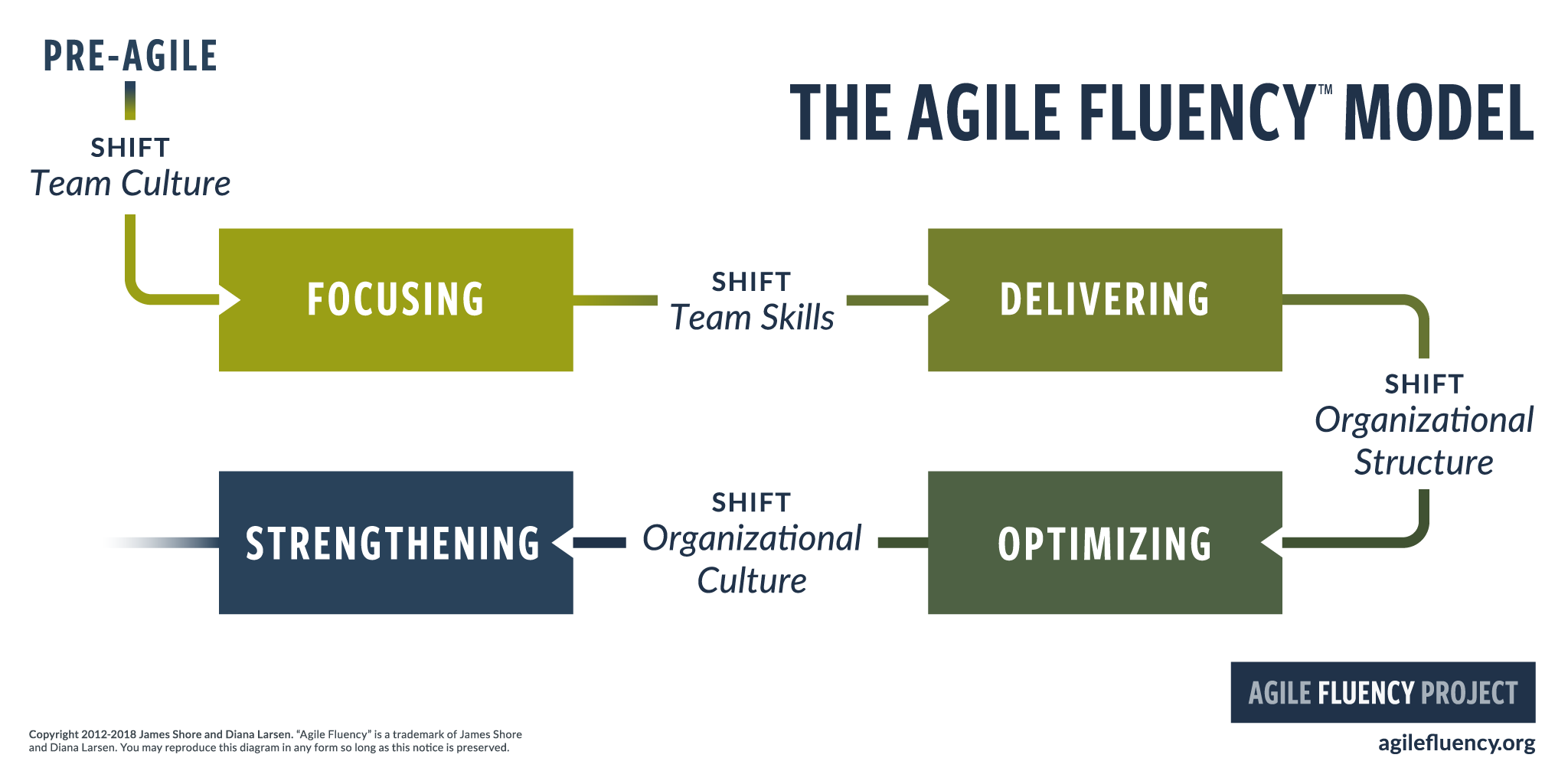Agile Fluency Model Updated
March 5, 2018
Six years ago, Diana Larsen and I created the Agile Fluency™ Model, a way of describing how agile teams tend to grow over time.

In the last six years, the model has gone on to be more influential than Diana and I ever expected. People and companies are using it around the world, often without even telling us. In that time, we've also learned new things about the model and what fluent agility looks like.
Today I'm happy to announce that we've released a new, updated article about the Agile Fluency Model. It's a substantial revision with much more detail about the benefits, proficiencies, and investments needed for different kinds of agile development.
We've also launched the Agile Fluency Diagnostic, a way to help teams develop new capabilities. It's a facilitated self-assessment conducted by experienced agile coaches. We have a list of licensed facilitators and you can also become licensed to conduct the Diagnostic yourself.
Many thanks to Martin Fowler, who published our original article and encouraged us to release this updated version. Check it out!

